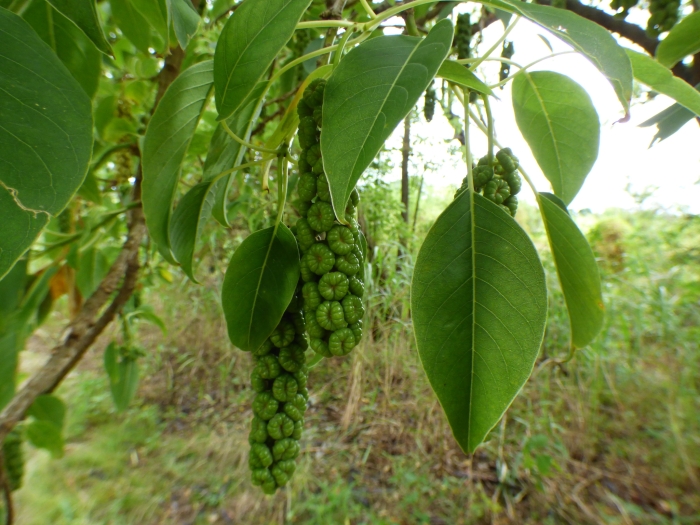Ombú
(Phytolacca dioica)
Ombú (Phytolacca dioica)
/
/

Pablo H Capovilla
CC BY-SA 4.0
Image By:
Pablo H Capovilla
Recorded By:
Copyright:
CC BY-SA 4.0
Copyright Notice:
Photo by: Pablo H Capovilla | License Type: CC BY-SA 4.0 | License URL: http://creativecommons.org/licenses/by-sa/4.0/ | Rights Holder: Pablo H Capovilla | Publisher: iNaturalist | Date Created: 2022-01-18T16:58:28-08:00 |























Estimated Native Range
Summary
Phytolacca dioica, commonly known as ombú, is a massive evergreen tree native to the grasslands and savannas of the Pampas in South America, particularly in Argentina, Uruguay, and Rio Grande do Sul. It typically grows 39-59 feet tall and develops an umbrella-like canopy spreading 39-49 feet in diameter. The ombú is notable for its thick, tuberous caudex, which stores water and allows the tree to survive in its arid native habitat. Its wood is soft and spongy due to the high water content. The tree’s sap contains toxic compounds, which makes it resistant to locusts and other pests. Ombú is an emblematic species in its native regions, often providing shade and shelter in the open Pampas grasslands.
The ombú tree is valued for its rapid growth, expansive shade, and ornamental presence in large spaces such as parks and estates. It is also used for creating dramatic landscape effects due to its unique form and size. In cultivation, it requires full sun and can tolerate a range of soil types, provided they are well-drained. While it is drought-tolerant, the ombú benefits from occasional deep watering during prolonged dry periods. It is not suitable for small gardens due to its large size and potential to spread aggressively through root suckers. Gardeners should be cautious about planting ombú outside its native range, as it can become invasive in some regions.CC BY-SA 4.0
The ombú tree is valued for its rapid growth, expansive shade, and ornamental presence in large spaces such as parks and estates. It is also used for creating dramatic landscape effects due to its unique form and size. In cultivation, it requires full sun and can tolerate a range of soil types, provided they are well-drained. While it is drought-tolerant, the ombú benefits from occasional deep watering during prolonged dry periods. It is not suitable for small gardens due to its large size and potential to spread aggressively through root suckers. Gardeners should be cautious about planting ombú outside its native range, as it can become invasive in some regions.CC BY-SA 4.0
Plant Description
- Plant Type: Tree
- Height: 35-39 feet
- Width: 39-49 feet
- Growth Rate: Slow, Moderate
- Flower Color: Green, White
- Flowering Season: Spring, Summer, Fall
- Leaf Retention: Evergreen, Semi-deciduous
Growth Requirements
- Sun: Full Sun
- Water: Medium
- Drainage: Medium
Common Uses
Erosion Control, Low Maintenance
Natural Habitat
Grasslands and savannas of the Pampas
Other Names
Common Names: Bella Sombra, Umbu, Pokeweed, Belhambra, Umbratree, Ombú
Scientific Names: , Phytolacca dioica, Phytolacca arborea, Phytolacca dioica var. ovatifolia, Phytolacca populifolia, Phytolacca weberbaueri, Pircunia dioica, Sarcoca dioica,
GBIF Accepted Name: